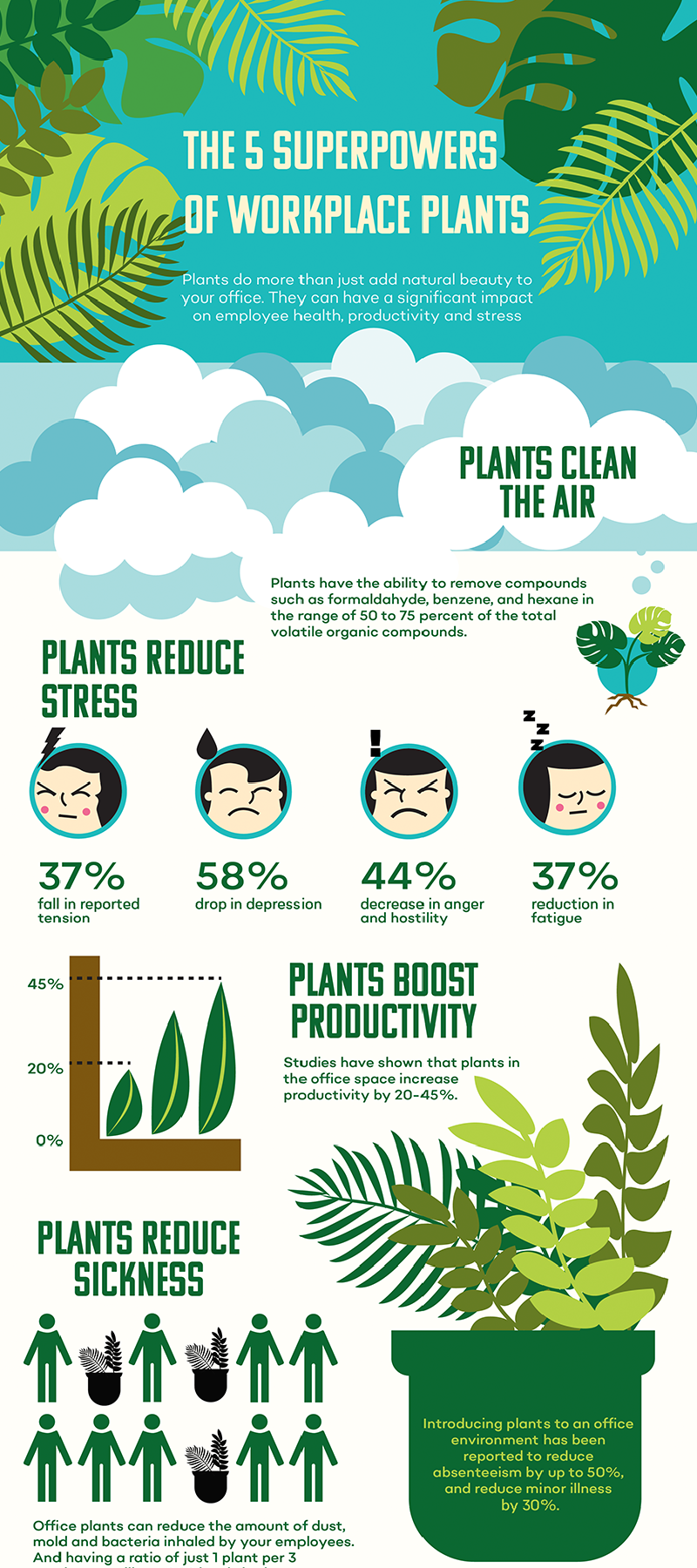Office Plants: The Natural Way to Grow Productivity and Profits
By Matt Brady

What is biophilia, and why are so many top-earning companies adopting biophilic workplace designs?
A quick image search will bring you numerous workspaces with green office furniture complemented by office plants of various species. Just take a look at Google’s Tel Aviv Office or Amazon’s impressive biospheres.
If you ever wished you could connect more with nature, you’re not alone. Biophilia, a term popularized by E.O. Wilson, describes people’s innate desire to affiliate with other living organisms.
Maybe you’ve caught yourself staring longingly at trees outside your office window. Or maybe your office doesn’t even have windows. Or perhaps you’re suffering from “sick building syndrome,” a growing epidemic in confining and dreary workspaces.
In a world where some workplaces are making people feel worse, office plants and biophilic designs offer a naturally uplifting solution.
So, what makes plants so special?
It’s common knowledge that plants absorb carbon dioxide and release oxygen.
Indoor plants also help remove pollutants in the air, reducing the amount of dust, mold, and bacteria. Aside from purifying the air, office plants double as noise blockers too. Plants absorb noise and reduce distracting office chatter, which means that once you add more plants, your office gets a whole lot more Zen.
And speaking of a calmer work environment, a study conducted by the University of Technology Sydney found indoor plants resulted in a 37% decrease in tension and anxiety among office workers. Workers also reported a drop in depression and hostility.
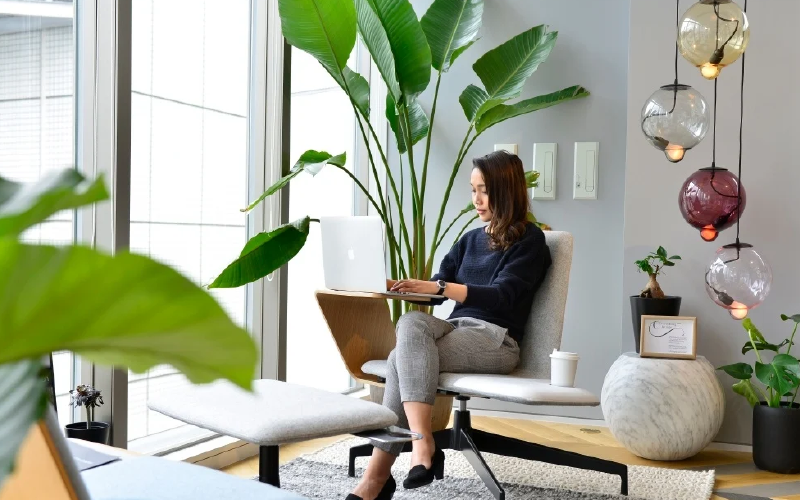
How do plants increase company productivity and profits?
Plants clean the air. Cleaner air not only prevents employees from getting sick, but it’ll also help your already sniffling coworkers get better quicker.
Studies conducted in hospitals found that patients with plants in their rooms recovered faster than those without.
Healthier workers mean fewer sick days and better work performance. Adding plants to office design has been found to reduce worker fatigue and improve memory retention. An increase in productivity means goals are met more often and quicker, increasing profits without increasing operating costs.
Bottom line: More green makes more green!
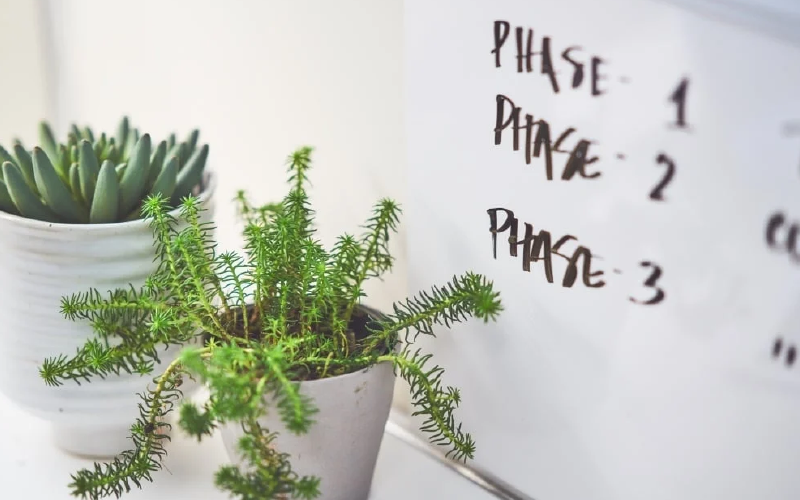
My office doesn’t have a lot of direct sunlight. Can I still have plants?
Yes! Most indoor plants can survive just fine without lots of direct light. Some plants that can still thrive in low-light conditions are Snake plants, Chinese evergreens, and ZZ plants.
Snake plants, also known as “devil’s tongue” and “mother-in-law’s tongue,” are characterized by their stiff, fleshy green leaves that grow upright. Aside from being named by someone who clearly wasn’t a fan of their in-laws, these are beautiful and low-maintenance plants to add to your office space.
Chinese evergreens are another great, low-maintenance option. They have large green (and sometimes red) leaves with light green markings, and only need to be watered every few weeks. Chinese evergreens are believed to be lucky, so if you pick one up, make sure to pick up a couple of lottery tickets on your way.
ZZ plants are hearty plants native to eastern Africa. They can survive in dry environments with minimal sunlight. You should water them once a month…or whenever you remember. These guys are pretty hard to kill.
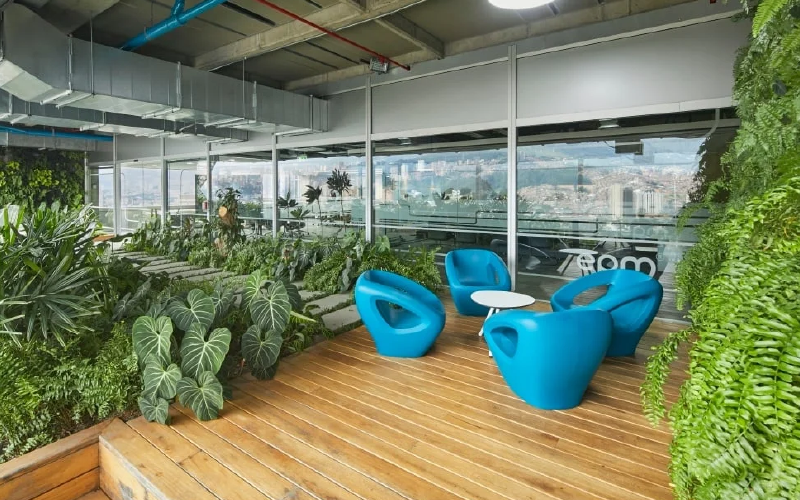
What are some other good plants to start with?
Evaluate your workplace. How big is it? Does it have lots of sunlight? How much maintenance are you willing to put in? You don’t need to be a botanist to incorporate biophilic design.
Desert plants like succulents, cacti, and aloe are nice plants to have if you live in a warmer climate and have an office with lots of sunlight. Though they’re drought-resistant, these plants thrive when watered weekly. Decorating office furniture with a potted cactus or two never fails to energize a space. Aloe is also handy to have around the workspace in case anyone gets a particularly vicious paper cut.
Devil’s Ivy is a fantastic hanging plant thanks to its large green leaves and vines. They’re one of the best plants at removing toxins from the air too. While these plants generally don’t require much upkeep, they do need to be pruned to control their growth.
Large office plants like monstera plants, mass canes, and fiddle leaf figs are great statement pieces. Monstera plants can grow over 30 feet—hence the name. They’re also cutely referred to as the Swiss cheese plant because of their large perforated green leaves. Mass canes and fiddle leaf figs are other easy-to-care-for tree-like plants
These strong and tall office plants will complement your office furniture and tie your workspace together.
RELATED READ: 9 WAYS TO MANAGE SOUND IN THE WORKPLACE
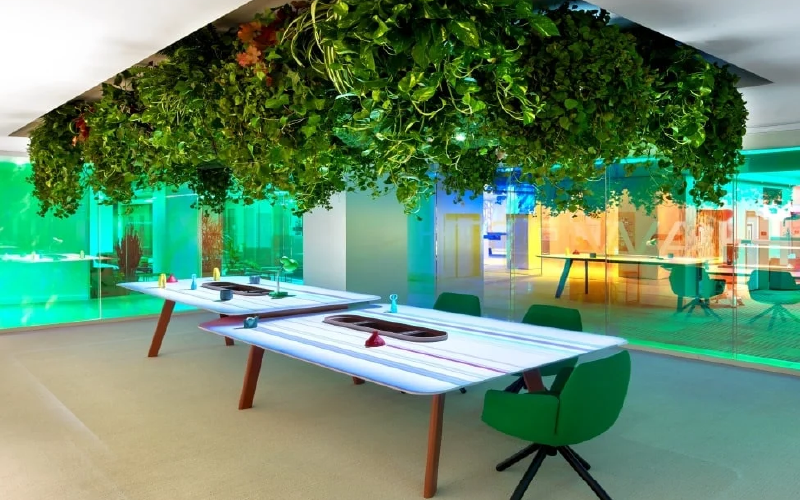
What’s the best way to incorporate plants into an office design?
Adding potted plants of various sizes amongst and atop office furniture is a good first step in “greening” your space.
It’s important to feature a variety of plant species as well. Not only does this mimic how we see plants in nature, but having various office plants will also make your workplace design more captivating.
Hanging plants are another fantastic addition to an office. If you have the means, consider adding vertical gardens and green walls to your workplace. Wall gardens allow you to add large quantities of plants without sacrificing floor space, and they’re guaranteed to draw attention.
Given the incredible benefits of plants in the office, the last thing you want is for your plants to go unnoticed.
Good biophilic design is the key to planning a smart and productive work environment.
